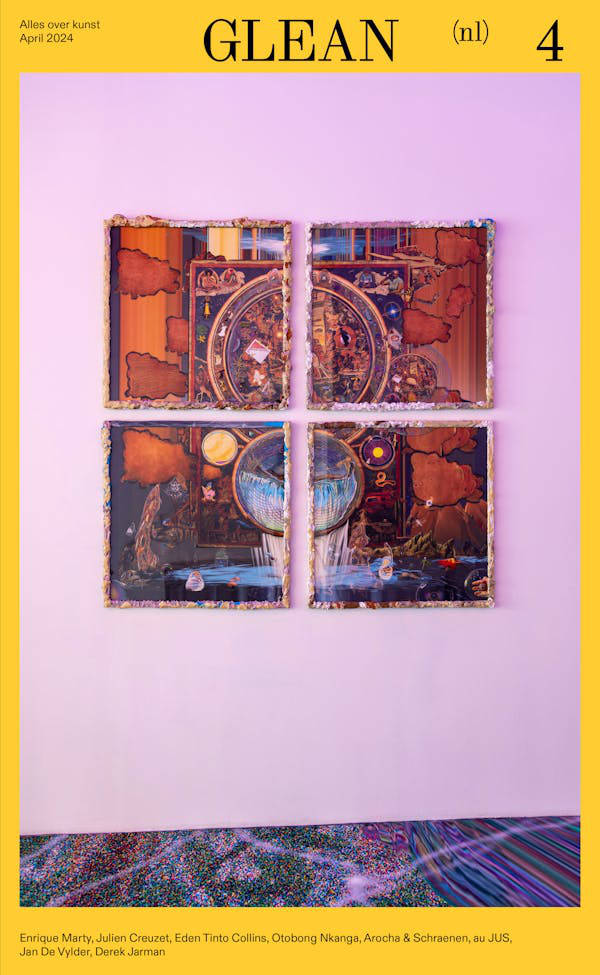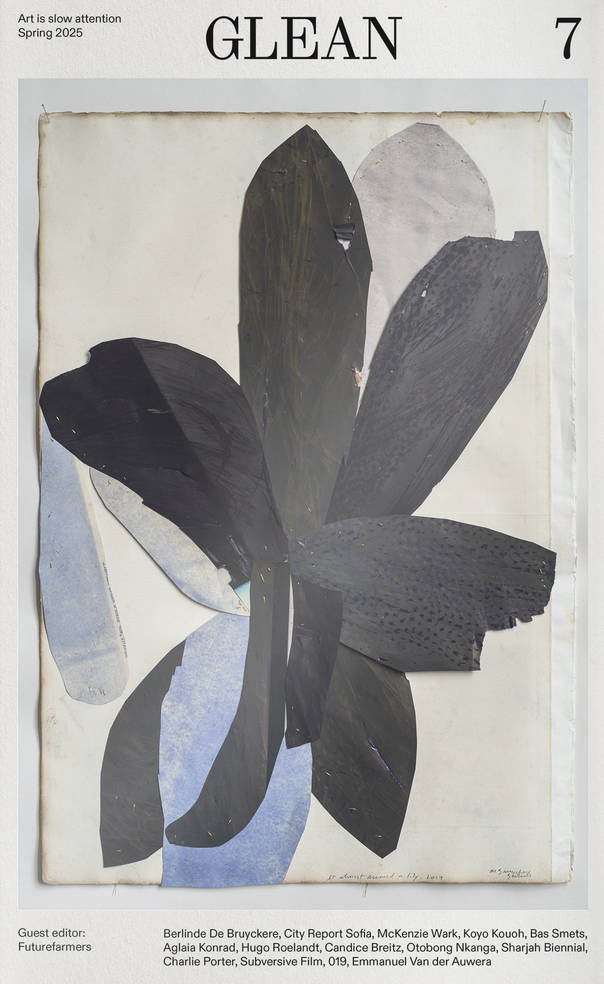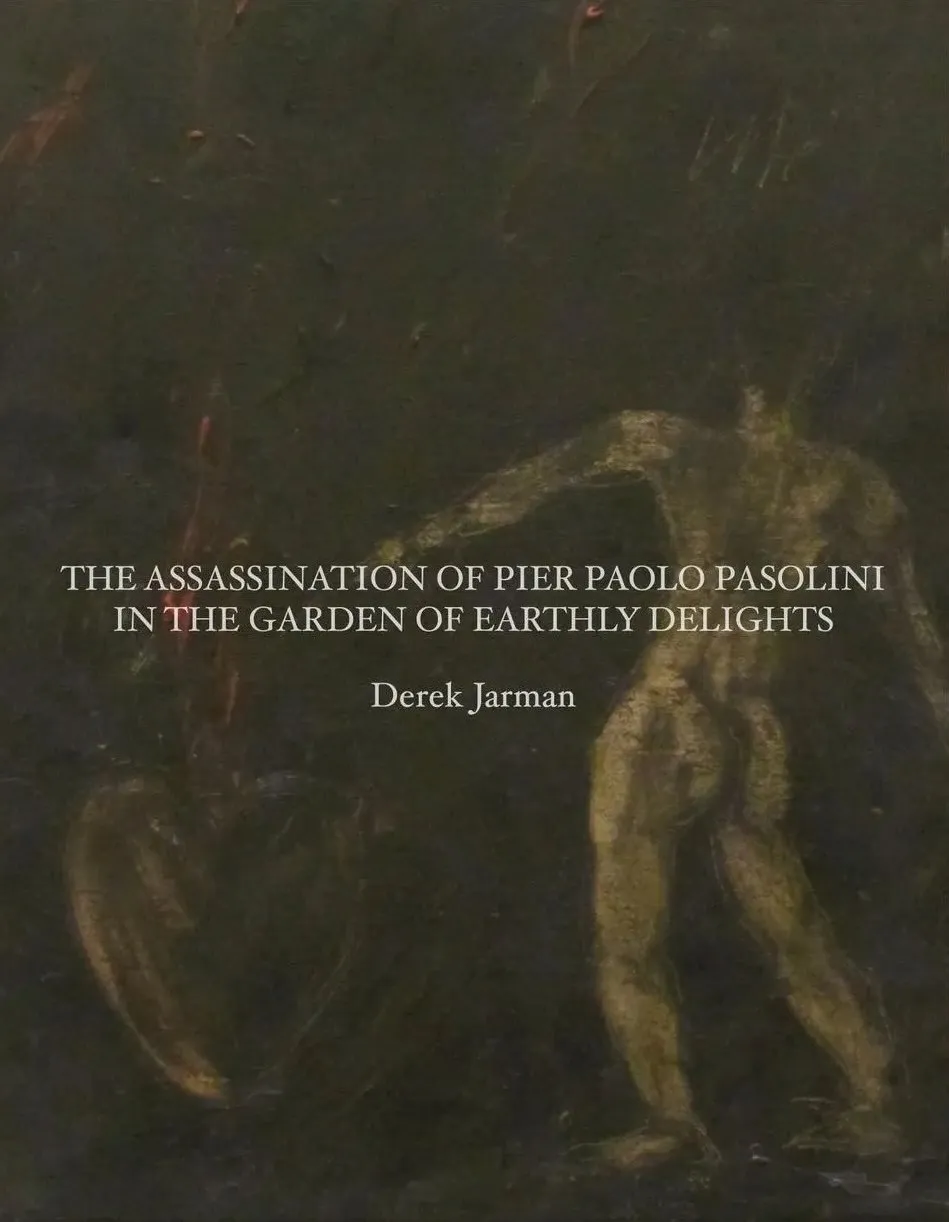
GLEAN - Issue 4 (NL edition)
GLEAN ed.
Enrique Marty, Julien Creuzet, Eden Tinto Collins, Otobong Nkanga, Arocha & Schraenen, au JUS, Jan De Vylder, Derek Jarman
Language: Dutch

GLEAN ed.
Enrique Marty, Julien Creuzet, Eden Tinto Collins, Otobong Nkanga, Arocha & Schraenen, au JUS, Jan De Vylder, Derek Jarman
Language: Dutch

Guest Editor: Collectif Picha, Lumbumbashi Biennale, City Report Athens, Andrei Molodkin, Maryam Najd, Andrien Lucca, Valérie Mannaerts, Kendell Geers, Gabi Ngcobo, Maja Daniels, Zhang Yunyao, Wim Delvoye, Larissa Sansour, Dome Wood

Futurefarmers, Berlinde De Bruyckere, City Report Sofia, McKenzie Wark, Koyo Kouoh, Bas Smets, Aglaia Konrad, Hugo Roelandt, Candice Breitz, Otobong Nkanga, Sharjah Biennial, Charlie Porter, Subversive Film, 019, Emmanuel Van der Auwera.

Derek Jarman’s unrealised film treatment, The Assassination of Pier Paolo Pasolini in the Garden of Earthly Delights, takes as its subject matter the events leading up to and including the murder of Italian film director Pier Paolo Pasolini following the making of his final film Saló, or the 120 Days of Sodom in 1975.
Written in 1984, the setting of Jarman's film is inspired by the renaissance painter Hieronymus Bosch’s triptych, The Garden of Earthly Delights (1490-1500), a painting that depicts both the joys and perils of temptation, and which Jarman encountered on a visit to the Museo de Prado in Madrid the year he began working on the project.
For the first time, a facsimile of the treatment is presented alongside reproductions from the film's workbook, which show Jarman's calligraphic notes towards the film’s sequences, themes, cinematography, lighting, sound, costume, casting and props.
2025 marks fifty years since Pasolini's murder and thirty-two since Jarman’s death due to AIDS. Against a backdrop of funding cuts to the arts and the arrival of the HIV/AIDS epidemic that vanished away so many important artists and visionaries, The Assassination of Pier Paolo Pasolini in the Garden of Earthly Delights is a powerful elegy to the decadence of queer cinema and the tragedy of its last auteur.
Derek Jarman was one of the most influential British artists of the twentieth century. His practice, as diverse as it was prolific, spanned painting, sculpture, film, writing, stage design, gardening and activism. He was an outspoken campaigner for LGBTQIA+ rights, and was one of the first public figures in the UK to raise awareness for those living with HIV/AIDS, announcing his own HIV diagnosis on the radio in 1986.

Guest editor: Orla Barry, City Report Brussels: Maxime Fauconnier and Natural Contract Lab, Kasper König, Kendell Geers, Lucy McKenzie, Nástio Mosquito, Lisa Vlaemminck, Paloma Bosquê, Joar Nango, Sandrine Colard, Wu Tsang, Busan Biennale

Apparatus 22, Dak’Art, Tarek Atoui, Sirah Foighel Brutmann & Eitan Efrat, Yoko Ono, Pei-Hsuan Wang, Anna Zemánková, Sarah Smolders, Miranda July, Britta Marakatt-Labba, Ignacio Barrios

Art is slow attention. Autumn 2025
Guest Editor: Jota Mombaça
With Contributions from: Rosana Paulino, City Report São Paulo, Bonaventure Soh Bejeng Ndikung, Bruno Baptistelli, Françoise Schein, Anna Maria Maiolino, Rubem Valentim, Els Opsomer, Elen Braga, Julien Creuzet and Lieven De Boeck.
GLEAN is a Brussels-based magazine for contemporary art with quarterly publications in both English and Dutch.


Movement Research Performance Journal
Movement Research announces Issue 52/53 of its print publication, the Movement Research Performance Journal. For this issue, Sovereign Movements: Native Dance and Performance, guest editor, choreographer Rosy Simas invited writer, Ahimsa Timoteo Bodhrán, to work with her. Together they assembled contributors from Native and Indigenous communities to reflect upon their practices, the historical conditions out of which they operate as well as movement, performance, and choreography as a socio-political project. Just as it is important for physical institutions to acknowledge that they sit upon occupied land of Native and Indigenous people, so too must institutions of history, practice, and epistemology acknowledge their occupation of knowledge and memory.
Throughout this issue, dance and movement is posited as a powerful strategy against settler-colonial mindsets and as an effective tool against erasure of Native and Indigenous cultural traditions. These pages discuss the importance of Native sovereignty and analyze various histories of resistance to settler-colonialism. Artists in the issue propose alternative artistic models to probe the roles of art and artists in society towards a more expansive constellation that fundamentally critiques the Western reward system in culture as well as the often celebrated cult of authorship.